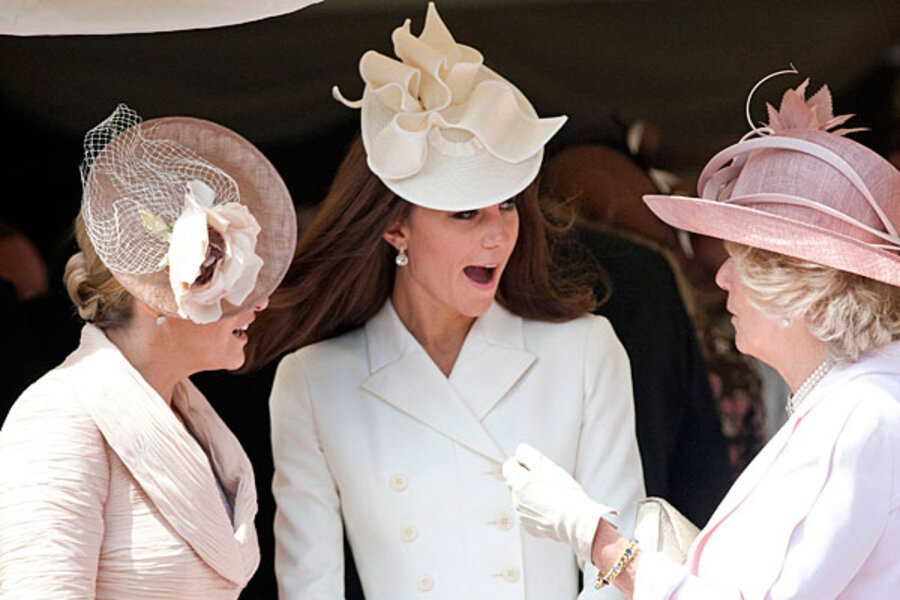UK's thoroughly modern royals? Not exactly. Commoner Kate has to curtsy.
Loading...
| London
News that the Duchess of Cambridge Kate Middleton, the probable future queen of England, has been instructed to curtsy to her husband’s younger cousins has caused some surprise here, where she has quickly come to be regarded as one of the most senior members of the royal family.
Queen Elizabeth II has approved an update of the Order of Precedence in the Royal Household, a sort of manual of court rules, that has been amended to take into account the addition of Kate, who married Prince William last year.
The Order now states that Kate, who has no royal blood in her veins, must curtsy to the “blood princesses”: the Princess Royal, Anne; Princess Alexandra, the granddaughter of George V; and the daughters of the Duke of York, Princesses Beatrice and Eugenie; when she is not accompanied by her husband.
When Kate is with William, she need not curtsy to the blood princesses, but even in his presence she must curtsy to the Queen and Prince Philip; her father-in-law Charles, the Prince of Wales; and his wife, the Duchess of Cornwall.
It has come as a surprise to some that the royal family should spell out such an arcane piece of protocol at a time when it is seeking to project a more modern image. Kate, with her relaxed, easy manner, is considered to have been great asset in this endeavor.
The royal family is also attempting to pare itself down and present a more compact group of key family members at public events. During the Diamond Jubilee Celebrations earlier this month only Prince Charles, Camilla, William, Kate and Harry joined the queen on the balcony of Buckingham Palace.
Ten years earlier, at the Golden Jubilee events, all the queen’s four children stood alongside her.
"It is quite apparent that the more distant royals are being phased out, in terms of their duties and privileges, although it will be done slowly,” says Liz Brewer, an expert on etiquette among the British upper classes. “But this is the form, this is how things are done, and there are certain rules that you follow. Once you start to say, let’s forget that one, the whole thing starts to fall apart.”
She cites as an example of this general rule the relaxation of protocol at Royal Ascot – an annual horse race attended by the queen, a racing fanatic – governing which people are invited into the royal enclosure.
“Once those rules were relaxed the dress code got more and more inappropriate until you had people with short dresses flying up and all that sort of thing,” says Ms. Brewer.
This year, the organizers sought to undo the damage with an exacting new dress code that specified skirts of knee-length or longer and hats “with a base of four inches or more.”
The order was last updated in 2005, following Prince Charles’s marriage to Camilla Parker-Bowles. That change clarified that neither Princess Anne nor Princess Alexandra would have to curtsy to Camilla when Prince Charles was not in the room.
One of the biggest questions surrounding the new update of the order is whether Kate Middleton is expected to curtsy to the younger princesses when the royal family is relaxing in private. If she is, it must come as a relief that Debretts, which has published a heavy “Peerage and Baronetage” tome since the 18th century, defines the curtsy as “just a short bob (not a full ground-sweeping dip).”





